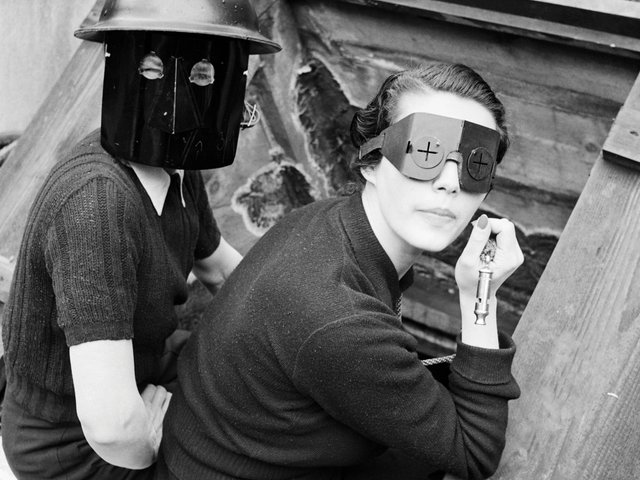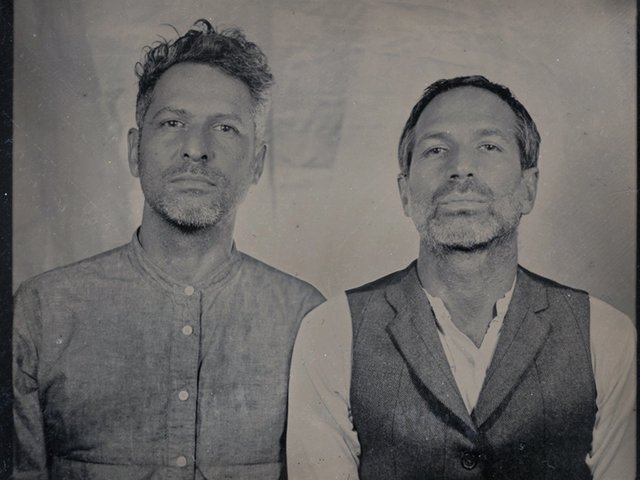Eric Ravilious, Dulwich Picture Gallery (until 31st August)
Eric Ravilious is best known for his quintessentially British prints and designs of the 1930s—his 1937 alphabet mug for Wedgwood is a classic—but this wonderful show of more than 80 of his crisp, lucid and highly evocative watercolours made during a brief career cut tragically short when his aircraft vanished in bad weather over Iceland in 1942, confirm that he was also one of the all-time great masters of the medium. There’s noting flashy about these modest, soberly hued scenes of streets, gardens, domestic interiors, and swathes of rolling countryside—or the records of the nation’s coastal defences and military equipment made after his appointment as war artist. At the same time there’s nothing genteel either: every element has been observed and put together with a rigorous abstract formalism which, when spliced with Ravilious’ evident relish in the inherent strangeness of even the most mundane of subjects, renders these oh-so English scenarios unexpectedly complex and compelling.
Guido Guidi: From the Interior, Large Glass (until 26 June)
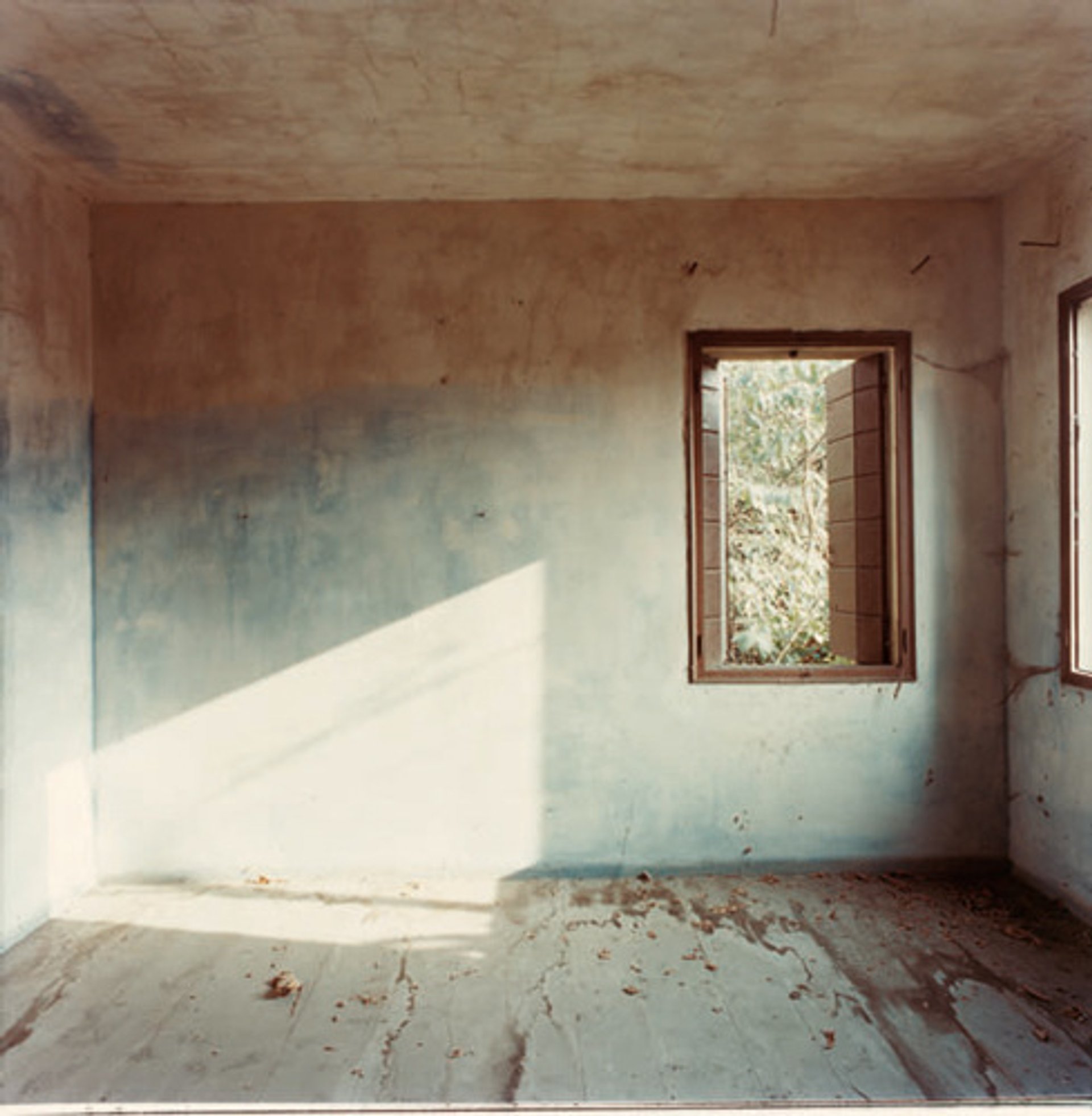
Through the lens of Guido Guidi, a derelict damp-stained room becomes a limpid record of light shifting and time passing as, in 16 colour photographs, this quiet master of Italian photography tracks the movement of a patch of sunshine around four mottled walls over the course of a single day. In another work, the interplay of angles, planes and reflections cast by an open window, a door and a mirror combine to create a complex abstract composition that is at once utterly magical and completely matter of fact. Guido studied architecture in Venice in the 60s (Carlo Scarpa was one of his tutors) and over a career-spanning more than four decades Neorealist film and conceptual art have also had a significant role in shaping his scrupulously unsentimental but also intensely personal images, in which close observation is almost akin to a devotional act.
Tal R: Chimney School of Sculpture, Victoria Miro, Wharf Road (until 30 May)
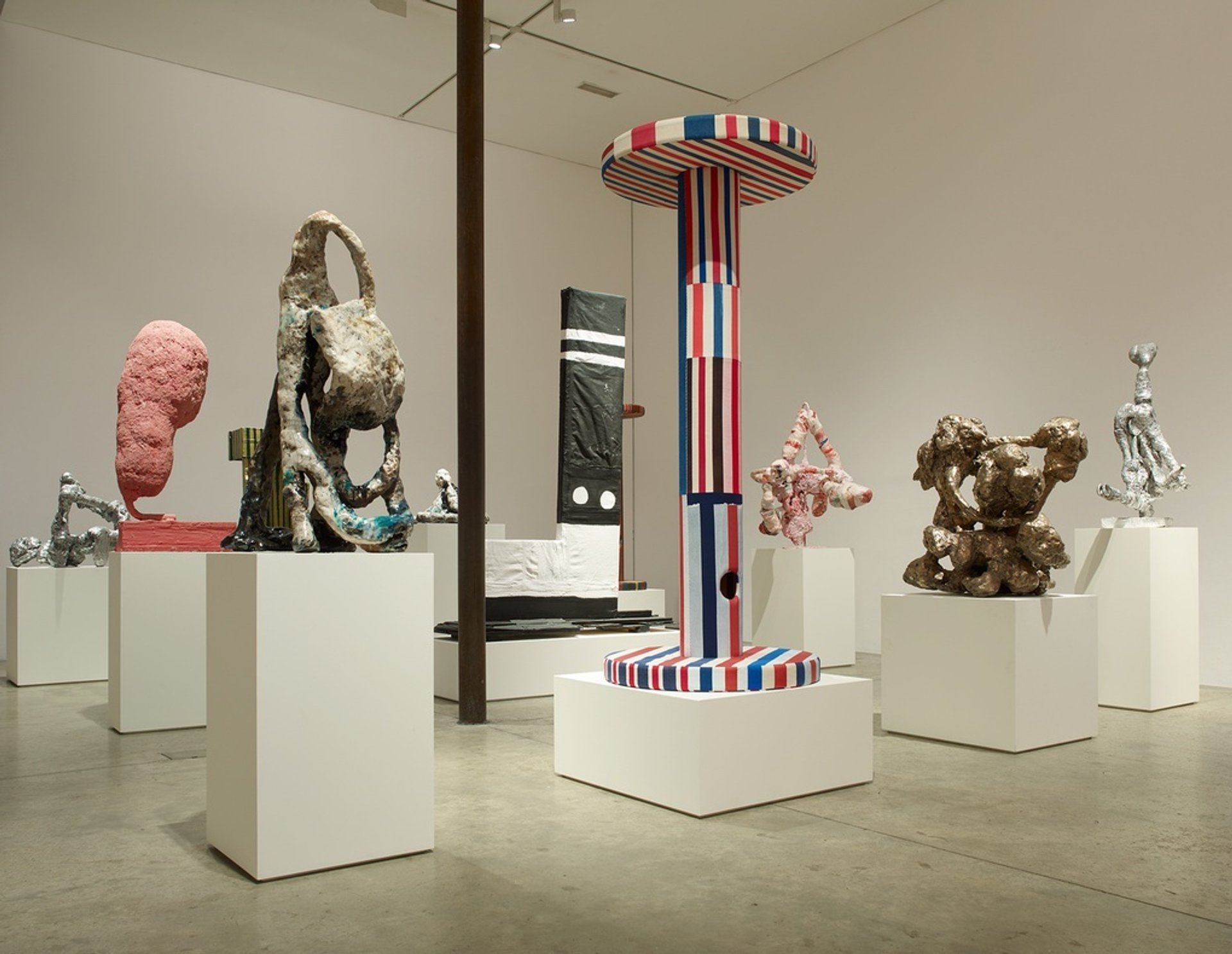
Tal R uses ‘kolbojnik’, the Hebrew word for ‘leftovers’ to describe the flow of figurative and abstract imagery which feeds into his distinctively wild, exuberantly-executed paintings, where anarchic immediacy can sometimes detract from the Tel Aviv-born, Copenhagen-based artist’s wide and sophisticated range of references. The same hoover-it-up principle applies to this new sculpture which presents a crowd of lofty vertical fabric-covered works loosely reminiscent of chimney flues, which are interspersed with organically globular Raku ceramics and a series of vividly-coloured sofa-like sculptures, designed both to be looked at and sat upon. Upstairs Tal R has built a long corridor structure lined with enigmatic paintings and works on paper, all depicting a closed pull-blind that could be analogous to a closed eye. The inference perhaps being that, within each of us, we carry our own kolbojnik, which should get an airing from time to time.
Theaster Gates: Freedom of Assembly, White Cube (until 5 July)
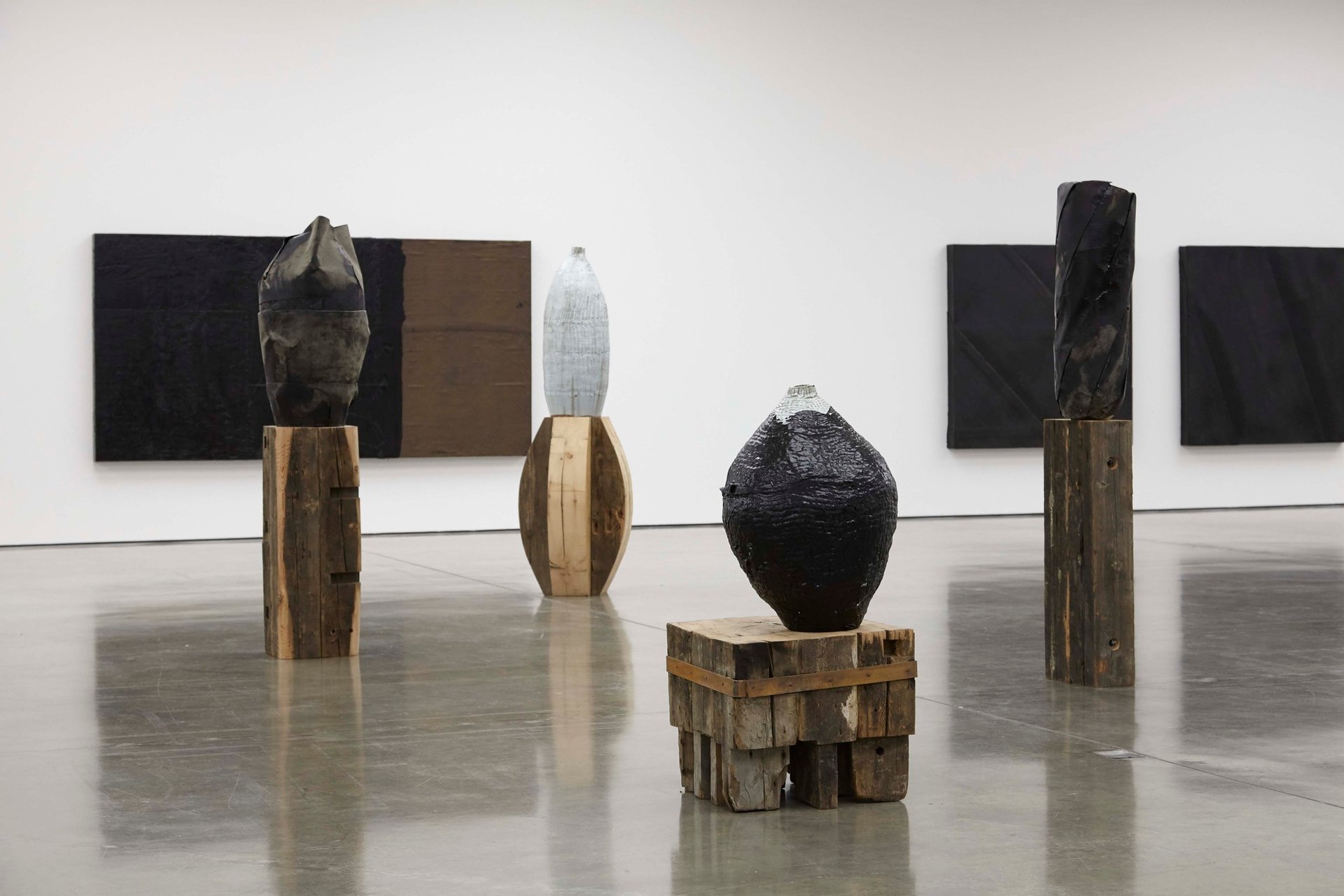
Theaster Gates continues to transform salvaged elements from the disused buildings of his home neighbourhood in Chicago’s rundown South side into trenchant artworks that stand both as testament to the devastation of these communities while also being gainfully employed as revenue raisers for projects to support their regeneration. The latest work at White Cube forms a series of barbed riffs on the tropes of Modernism—an elegantly abstract piece of geometric constructivism turns out to be the reconfigured wooden floor of a high school gym, Brancusi’s Endless Column is remade in pegboard salvaged from a shut-down hardware store, while a quasi-Donald Judd is fashioned from the prongs of forklift trucks climbing up the wall. A new series of giant paintings on wood are created out of the methods and materials of his father’s roofing trade—tar, rubber, felt, asphalt membrane—simultaneously evoking both family history as well as the giants of gestural abstraction. Especially striking is a series of large ceramic vessels, many of which have also been encased in roofing materials, which stand as striking testament to Gates’ original training as a potter. This show is a fitting accompaniment to Gates’ terrific piece currently on show at the Venice Biennale in the even more cavernous space of the Arsenale.


